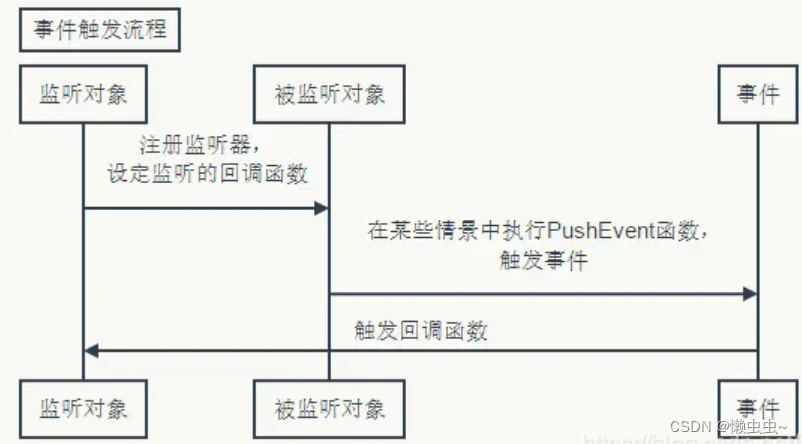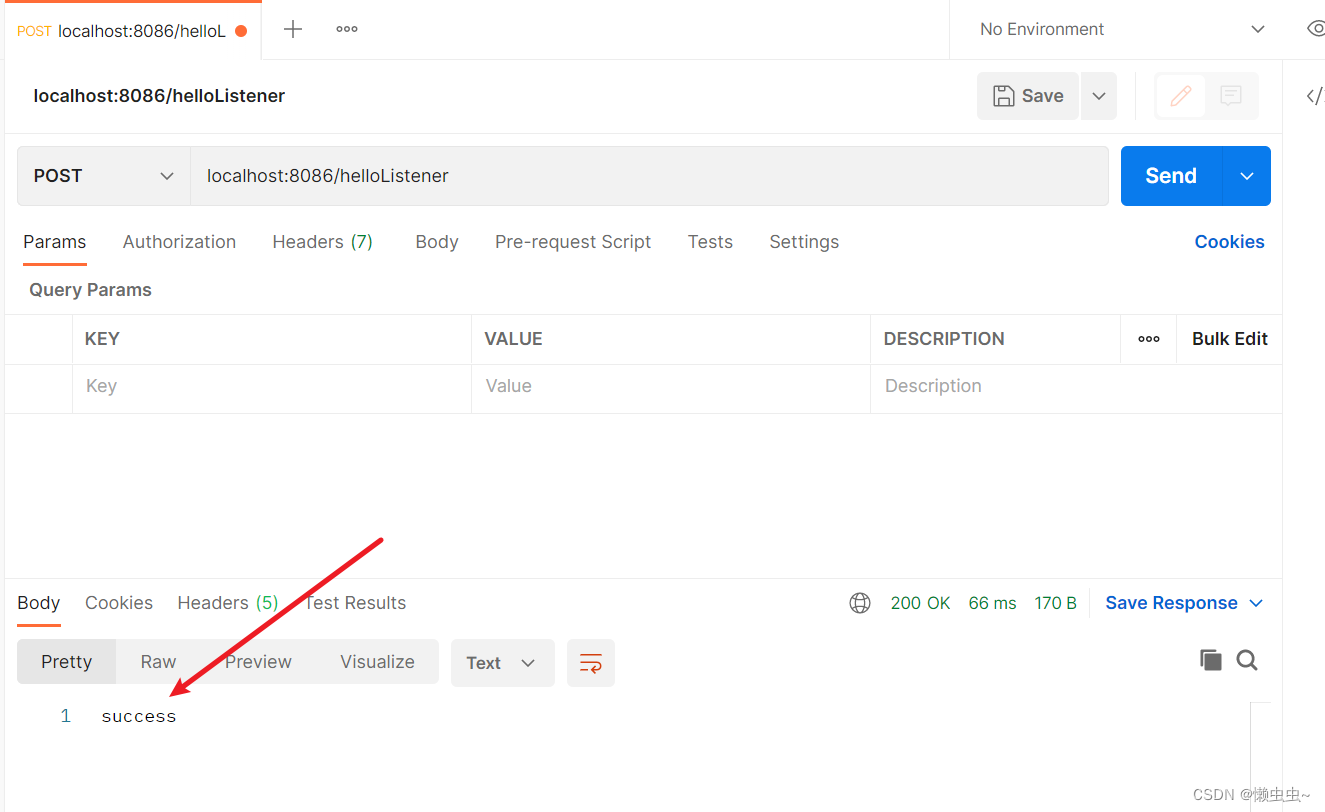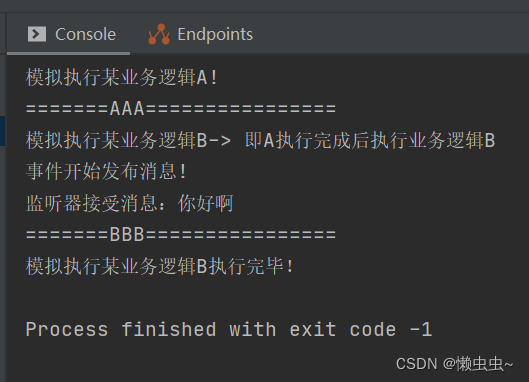您现在的位置是:首页 >其他 >【Spring】Spring之publishEvent网站首页其他
【Spring】Spring之publishEvent
观察者模式Spring之publishEvent事件处理
1.使用场景
这个一般什么时候使用,我们一般是在不同的bean直接进行信息传递,比如我们beanA的事件处理完后,需要beanB进行处理一些业务逻辑的时候这种情况就一般可以使用publish-event解决。
可用于操作日志记录
2.原理
ApplicationContext中的事件处理是通过ApplicationEvent类和ApplicationListener接口来提供的,通过ApplicationContext的publishEvent()方法发布到ApplicationListener;。
一个事件模型有三个组成部分:被监听对象source(也称为事件源),事件event和监听对象listener。事件发布者在发布事件的时候->通知事件的监听者。
首先,由监听对象注册监听回调函数(Callback),当事件源触发了事件后,监听对象会收到事件源的信息,然后决定如何对事件源进行处理,简要流程如下图所示。

3.事件触发 && 监听处理过程
(1) 使用 org.springframework.context 包下的 ApplicationContext.publishEvent(ApplicationEvent appEvent) 发布事件
(2) 使用 org.springframework.context.event 包下的 @EventListener(事件名) 监听事件并处理。
注意:
(1) ApplicationContext.publishEvent 默认是同步操作, 并非发布后不管的异步操作,发布事件后需要等 @EventListener 执行完。
(2) 如果需要开启异步操作需要在@EventListener上增加@Async 注解。
4.代码实现
(1)CustomEvent
/**
* 用户事件监听
*
* @author zhang
*/
@Data
@AllArgsConstructor
@NoArgsConstructor
public class CustomEvent {
private String message;
}
(2)CustomEventListener
/**
* @author zhang
*/
@Component
public class CustomEventListener {
@EventListener(CustomEvent.class)
public void onApplicationEvent(CustomEvent customEvent) throws InterruptedException {
System.out.println("监听器接受消息:"+ customEvent.getMessage());
}
}
(3)CustomController
/**
* @author zhang
*/
@RestController
public class CustomController {
@Resource
private ApplicationContext applicationContext;
@RequestMapping("/helloListener")
public String helloListener(){
System.out.println("模拟执行某业务逻辑A!");
System.out.println("=======AAA================");
System.out.println("模拟执行某业务逻辑B-> 即A执行完成后执行业务逻辑B");
System.out.println("事件开始发布消息!");
applicationContext.publishEvent(new CustomEvent("你好啊"));
System.out.println("=======BBB================");
System.out.println("模拟执行某业务逻辑B执行完毕!");
return "success";
}
}
5.执行结果


https://blog.csdn.net/jike11231/article/details/124872298






 U8W/U8W-Mini使用与常见问题解决
U8W/U8W-Mini使用与常见问题解决 QT多线程的5种用法,通过使用线程解决UI主界面的耗时操作代码,防止界面卡死。...
QT多线程的5种用法,通过使用线程解决UI主界面的耗时操作代码,防止界面卡死。... stm32使用HAL库配置串口中断收发数据(保姆级教程)
stm32使用HAL库配置串口中断收发数据(保姆级教程) 分享几个国内免费的ChatGPT镜像网址(亲测有效)
分享几个国内免费的ChatGPT镜像网址(亲测有效) Allegro16.6差分等长设置及走线总结
Allegro16.6差分等长设置及走线总结